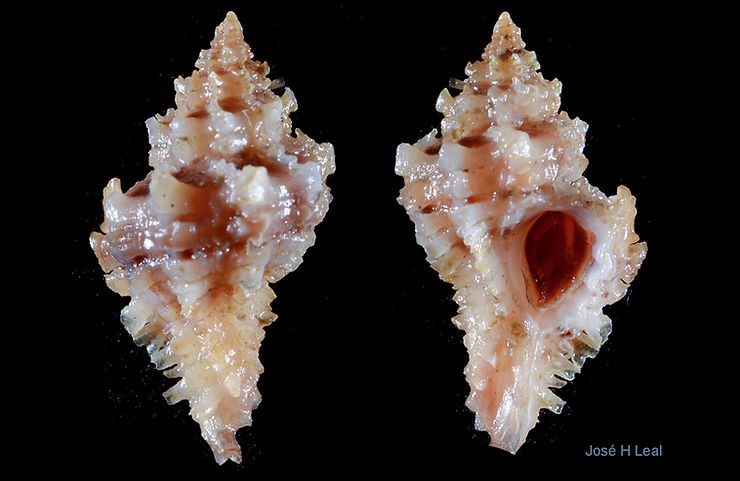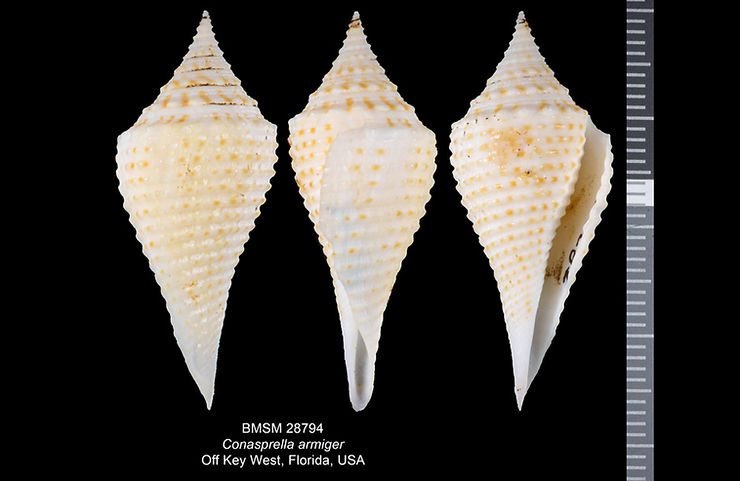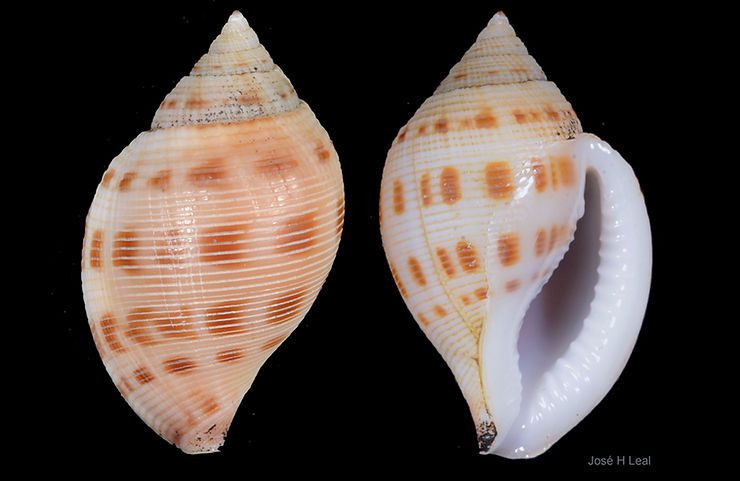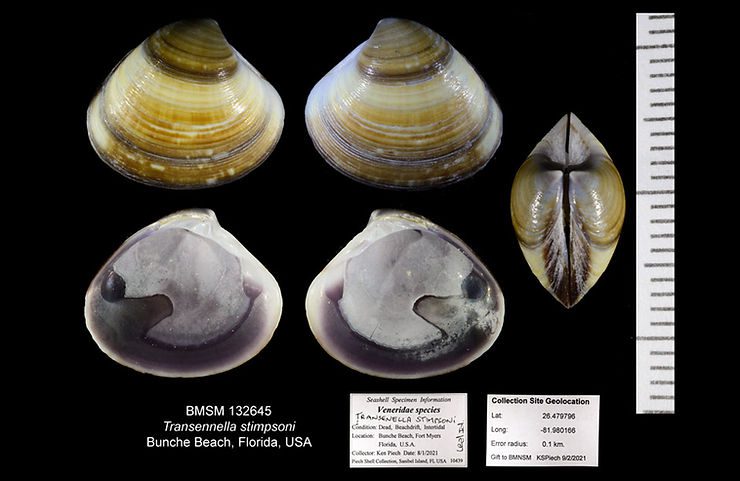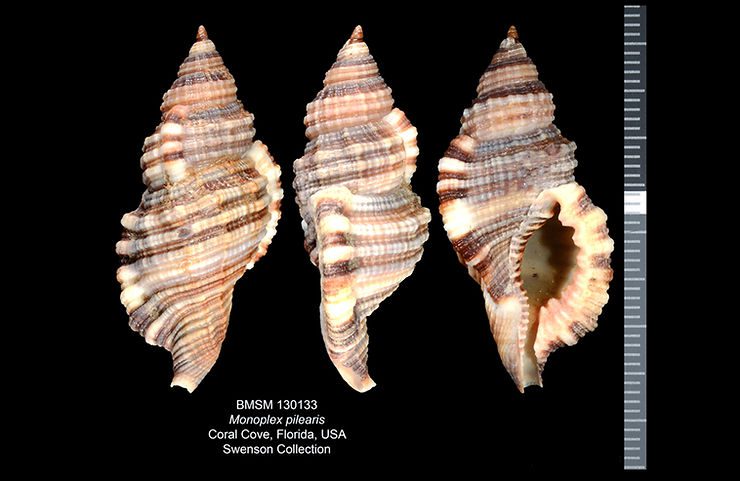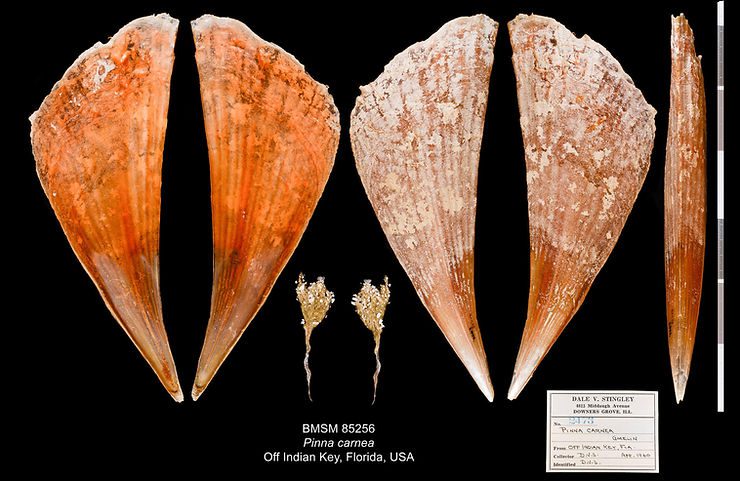
Shell of the Week: The Flame Cone
The Flame Cone, Conasprella delessertii Récluz, 1843 is found from North Carolina south to both sides of Florida and in the Gulf of Mexico to the Yucatan Peninsula. The species is known also as Delessert’s Cone or Sozon’s Cone. Alan Kohn, in his book on cone snails from the southeastern U.S. and Caribbean, observed that the species “ranges as far north on the Atlantic coast of the United States as any other Conus species.” It reaches 100 mm (about 4 inches), and the color pattern consists of thr
